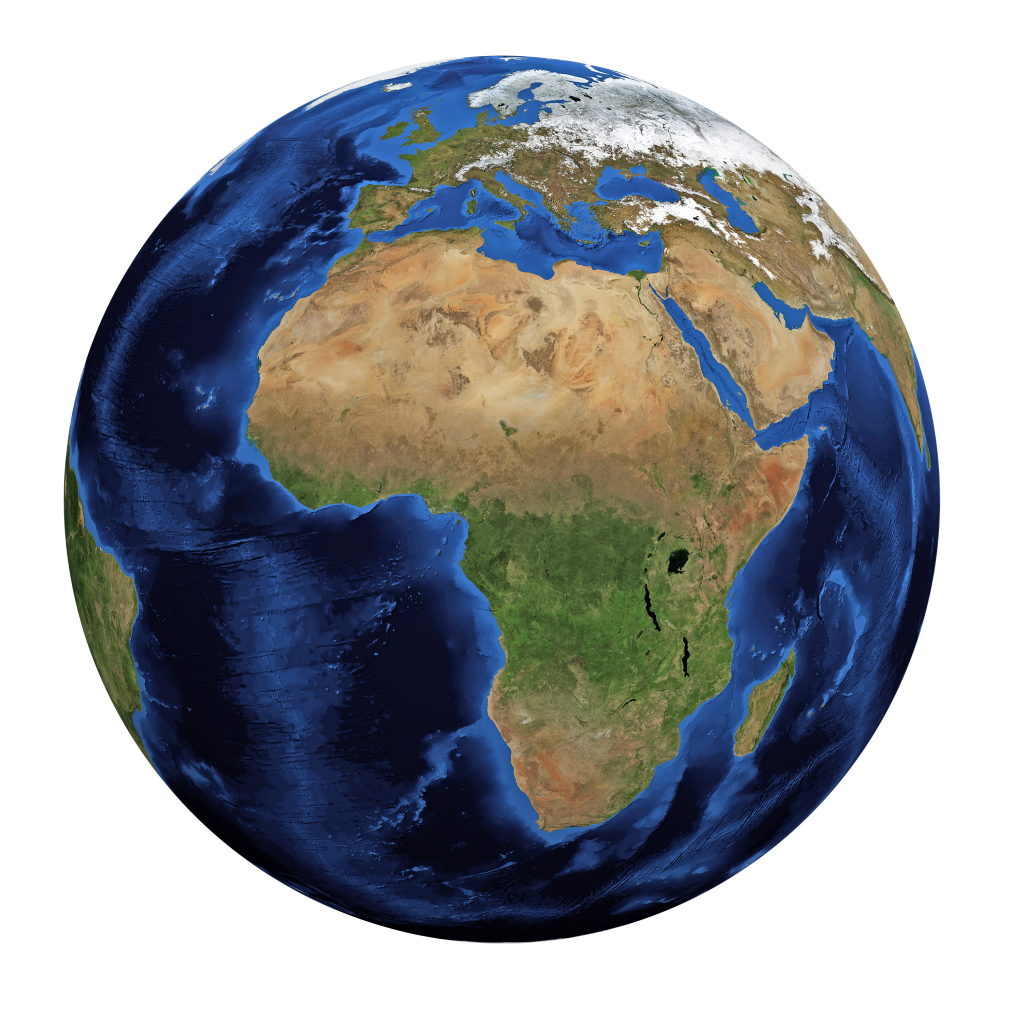Which is the largest continent? The smallest?

Can you tell which continents are largest and smallest based on this topographic map of the world, or is there more than meets the eye? (Image credit: FrankRamspott)
Hundreds of millions of years ago, a supercontinent called Pangaea formed. For about 125 million years, it contained almost all of the dry land on Earth. Since then, chunks of Pangaea have drifted apart and recombined in new ways. So which is the largest continent today? And what about the smallest?
The answer depends on what counts as a continent. According to the CIA World Factbook (opens in new tab) , the largest continent is Asia. Asia covers more than 17 million square miles (44 million square kilometers). Africa is the next-largest continent, then North America, South America, Antarctica, Europe and Australia.
But geographers have argued about the continents since antiquity. Writing in the sixth century B.C., the Greek historian Herodotus questioned why the names Asia, Africa and Europe should be given to, “what is really a single land mass; and why, too, the Nile and the Phasis — or, according to some, the Maeotic Tanis and the Cimmerian Strait — should have been fixed upon for the boundaries.” According to the book “The Myth of Continents; A Critique of Metageography (opens in new tab) ” (University of California Press, 1997), divisions between continents are based largely on tradition and culture.
Continents are large areas of land mostly surrounded by water — but that definition leaves room for interpretation. Today, Europe and Asia are sometimes combined (opens in new tab) and called “Eurasia.” Likewise, many children in Latin American countries like Chile (opens in new tab) learn the Americas as one continent instead of two. Combined, the Americas have an area of just over 16 million square miles (42 million square km) — larger than Africa but still smaller than Asia.
In some interpretations, Australia is the smallest continent, at just under 3 million square miles (8 million square km). Geologists define continents differently, however, and add at least one more continent that is even smaller.
Related: Where are most of Earth’s volcanoes?Continents, according to geologists
“Continents have a specific crustal structure,” said Joann Stock (opens in new tab) , a professor of geology and geophysics at the California Institute of Technology. “They are composed of rocks that are less dense than the rocks in the ocean basins.”
Both kinds of rock exist on tectonic plates, pieces of Earth’s crust that float around on the hot magma beneath the planet’s surface. For geologists, continents are large areas of contiguous continental crust. Using that definition, geologists recognize a continent called Zealandia that is even smaller than Australia.
When tectonic plates bump into each other, areas made of ocean crust often get shoved under continental crust and back into the magma. “They get recycled,” Stock told Live Science. Continents, on the other hand, tend to stay on the surface of the Earth. Even though continental rock is usually light enough to stay above sea level, it doesn’t always remain above water.
Rising seas can cover continental rock. Continental rock can also stretch and thin, pushing it partly below sea level. That is the case around New Zealand. New Zealand’s islands are actually the tallest points on a mostly submerged continent with an area of almost 2 million square miles (5 million square km). According to research published in the Geological Society of America (opens in new tab) in 2017, that continent is called Zealandia, and “geologists do consider it a continent,” Stock said.
While New Zealand has a land mass less than 4% as big as Australia’s, Zealandia is about two thirds the size of Australia. “There’s this Law of the Sea Treaty where countries can claim continental regions that are attached to their continents below sea level,” Stock said. New Zealand successfully expanded (opens in new tab) its underwater territory by mapping Zealandia’s edges.The smallest continents
But if Zealandia counts as a continent, is it the smallest continent? Or are there even smaller continents in the running? When large continents break apart, it looks like a shattered plate — there are big pieces like Africa, medium-size pieces like Zealandia, and lots of tiny shards of continental rock. Those shards are known as microcontinents. Some are islands; others are entirely below sea level.RELATED MYSTERIES—Are flat-Earthers being serious?
—How do we tell the difference between geologic ages?
—When did Antarctica become a continent?
Stock said most geologists don’t really think of microcontinents as continents. Instead, they reserve the label for big chunks — in essence, “ones that geologists could study and see how they fit back together.” According to the geologists who argued to include Zealandia as a continent in 2017, there isn’t a strong consensus on whether anything smaller should count.
Still, studying microcontinents is useful. According to Stock, knowing that rocks are continental in origin — as opposed to, say, volcanic, like the Hawaiian Islands — can help geologists identify where resources such as minerals or fossil fuels might be found.
Stock studies one of the smallest microcontinents identified so far: a small island in the Gulf of California called Isla Ángel de la Guarda (also called Archangel Island) that has an area of just 359 square miles (930 square km), or about the same size as the city of Indianapolis. It formed, Stock said, due to a game of geologic tug-of-war. Originally, “the Baja California Peninsula was stuck to the rest of Mexico,” she said. All of California was part of the North American tectonic plate. Then, “the Pacific Plate grabbed it” about 10 million years ago.
Research from Stock and her colleagues, published in the journal Tectonics (opens in new tab) in 2022, suggests that the rift between the two plates later moved again around 2 million years ago, leaving a small chunk of continental crust from Baja California — Isla Ángel de la Guarda — back on the North American plate, surrounded by ocean crust, in effect making it a microcontinent. “That can happen in slip-strike faults,” Stock said. Or, in tug-of-war terms: “the Pacific Plate gave it back.”

